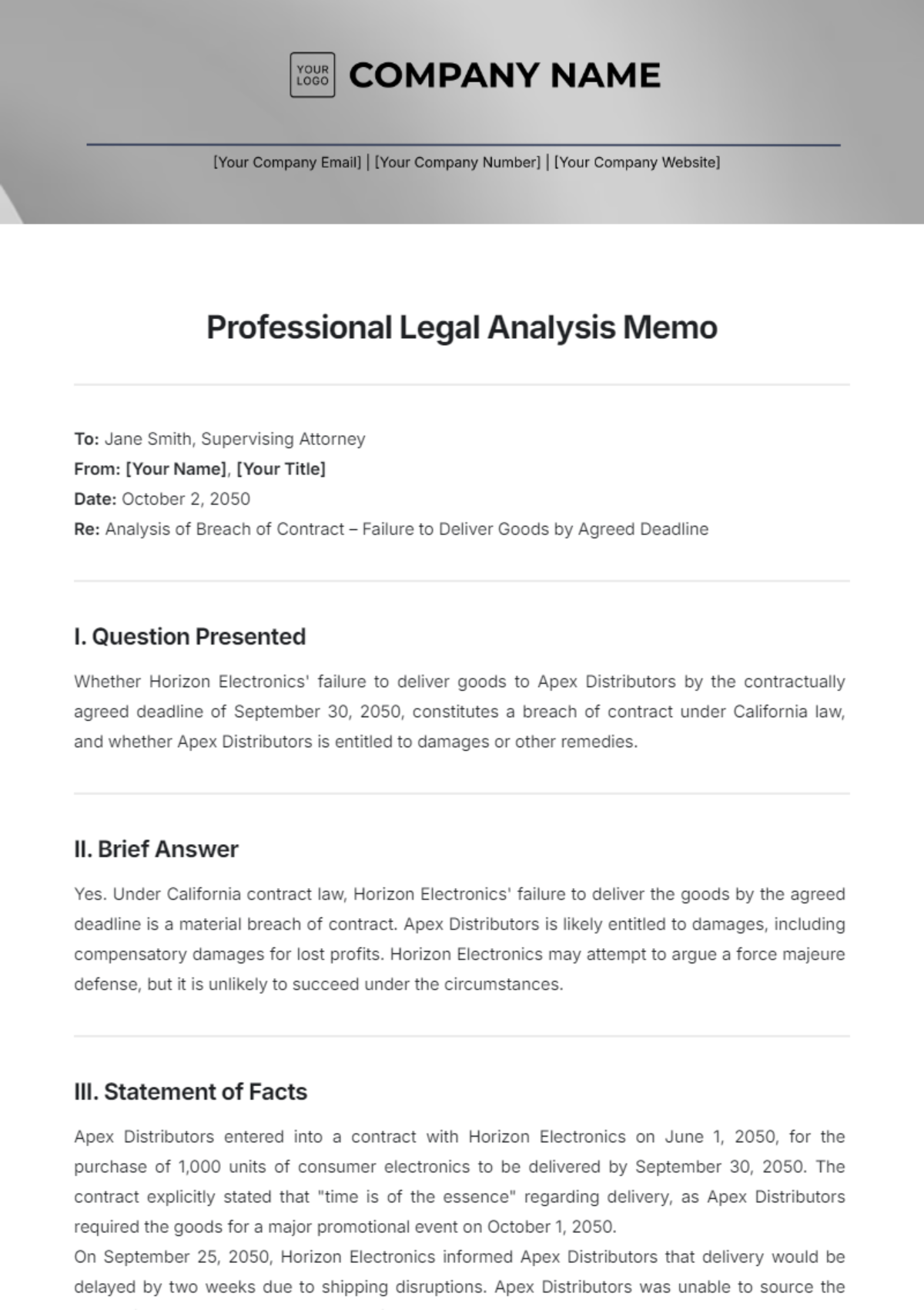Salon Inventory Analysis
I. Introduction
[Your Company Name] is dedicated to delivering exceptional beauty services and products to our valued clients. As part of our commitment to excellence, we conduct regular inventory analyses to ensure optimal stock levels, efficient turnover, and maximum customer satisfaction. In this report, we delve into the various aspects of our salon inventory analysis process.
II. Inventory Tracking and Management
Inventory tracking and management are foundational pillars of efficient salon operations at [Your Company Name]. We employ a comprehensive approach to ensure that our inventory remains well-organized, adequately stocked, and seamlessly integrated into our daily processes.
A. Inventory Systems Utilization
At [Your Company Name], we leverage advanced inventory management systems to streamline our tracking and management processes. These systems allow us to:
Real-Time Monitoring: Our inventory management software provides real-time updates on stock levels, enabling us to promptly identify low inventory levels and take necessary replenishment actions.
Barcode Scanning: We utilize barcode scanning technology to accurately track product movement, from receiving shipments to sales transactions. This minimizes errors and enhances inventory accuracy.
Centralized Data Management: All inventory-related information, including product details, quantities, and supplier information, is centralized within our inventory management system. This ensures consistency and accessibility across our salon locations.
B. Reorder Point Establishment
Establishing reorder points for our products is essential for proactive inventory management. At [Your Company Name], we determine reorder points based on factors such as:
Historical Sales Data: We analyze historical sales data to forecast future demand and determine the optimal reorder points for each product.
Lead Time Consideration: Taking into account supplier lead times, we set reorder points to ensure that new stock arrives before existing inventory runs out.
Seasonal Variations: We adjust reorder points to accommodate seasonal fluctuations in demand, ensuring that we maintain adequate stock levels during peak periods.
C. Inventory Organization and Storage
Efficient inventory organization and storage practices are crucial for maximizing space utilization and minimizing handling time. At [Your Company Name], we implement the following strategies:
Product Categorization: We categorize products based on type, brand, and usage to facilitate easy identification and retrieval.
Storage Optimization: High-demand products are strategically placed in easily accessible areas, while slower-moving items are stored in less prominent locations to optimize space usage.
First-in, First-out (FIFO) Method: We adhere to the FIFO method to ensure that older inventory is used first, reducing the risk of product expiry or obsolescence.
D. Inventory Audits and Cycle Counts
Regular inventory audits and cycle counts are conducted to maintain accuracy and integrity in our inventory records. These audits involve:
Physical Counts: Periodic physical counts of inventory are conducted to verify the accuracy of our inventory records and identify any discrepancies.
Cycle Counting: We implement cycle counting techniques, where inventory is counted in smaller, manageable batches throughout the year, minimizing disruptions to daily operations.
Root Cause Analysis: Any discrepancies identified during audits are thoroughly investigated to identify the root causes and implement corrective actions to prevent recurrence.
III. Sales Data Analysis
Analyzing sales data is essential for understanding customer preferences, identifying popular products, and forecasting demand. We regularly review our sales data to identify trends and patterns in product sales. By analyzing factors such as product performance, seasonal variations, and customer feedback, we can make informed decisions about inventory management and product selection.
The following table illustrates the breakdown of our sales data:
Product | Sales Volume (Units) | Revenue ($) |
|---|---|---|
Hair Care | 500 | $10,000 |
Skincare | 300 | $7,000 |
Styling Tools | 200 | $5,000 |
IV. Inventory Turnover Rate Calculation
The inventory turnover rate measures how quickly products are sold and replaced within a specific period. It is calculated by dividing the cost of goods sold (COGS) by the average inventory value. A high turnover rate indicates efficient inventory management, while a low turnover rate may suggest overstocking or slow-moving products. The following table illustrates the calculation of the inventory turnover rate for [Your Company Name]:
Period | COGS | Average Inventory | Inventory Turnover Rate |
|---|---|---|---|
Year 1 | $100,000 | $20,000 | 5 |
Year 2 | $120,000 | $25,000 | 4.8 |
Year 3 | $130,000 | $22,000 | 5.9 |
V. ABC Analysis of Inventory
ABC analysis categorizes inventory into three categories based on their importance and value to the salon's operations: A, B, and C. "A" items are high-value products with high sales volume, "B" items are moderately important, and "C" items are low-value items with lower sales volume. The following table illustrates the ABC analysis of inventory for [Your Company Name]:
Category | Number of Products | Sales Volume (%) |
|---|---|---|
A | 20 | 70 |
B | 50 | 20 |
C | 100 | 10 |
VI. Stock Level Optimization
Stock level optimization is vital for maintaining adequate inventory levels while minimizing carrying costs and preventing stockouts. At [Your Company Name], we employ several strategies to optimize our stock levels effectively:
Demand Forecasting: We utilize historical sales data, market trends, and customer feedback to forecast future demand accurately. By understanding seasonal variations and trends, we can adjust our stock levels accordingly to meet customer demand without excess inventory.
Safety Stock Management: To mitigate the risk of stockouts caused by unforeseen fluctuations in demand or supplier delays, we maintain a safety stock of essential products. This safety buffer ensures that we can continue serving our clients even during unexpected circumstances.
Just-in-Time (JIT) Inventory: For fast-moving products with predictable demand, we adopt a just-in-time inventory approach. This strategy involves ordering inventory to arrive just in time to meet customer demand, minimizing the need for excess stock and reducing carrying costs.
Inventory Turnover Optimization: We strive to optimize our inventory turnover rate by balancing stock levels with sales velocity. By regularly monitoring our inventory turnover rate and adjusting our stock levels accordingly, we can minimize holding costs and maximize the efficiency of our inventory management.
VII. Seasonal Demand Forecasting
Understanding seasonal fluctuations in demand allows us to adjust inventory levels and stock the right products at the right time. By forecasting seasonal demand, we can proactively manage our inventory to meet customer needs and capitalize on seasonal trends. The following table illustrates the seasonal demand forecast for key product categories at [Your Company Name]:
Season | Hair Care (Units) | Skincare (Units) | Styling Tools (Units) |
|---|---|---|---|
Spring | 800 | 500 | 300 |
Summer | 1000 | 600 | 400 |
Autumn | 700 | 450 | 250 |
Winter | 900 | 550 | 350 |
Spring: During the spring season, we expect an increase in demand for hair care and skincare products as customers prepare for warmer weather and outdoor activities. Additionally, styling tools may see a moderate increase in demand as clients seek new hairstyles for the season.
Summer: Summer is projected to be our peak season, with the highest demand for all product categories. As clients prioritize skincare protection against the sun and humidity, sales of skincare products are expected to surge. Similarly, hair care products for sun protection and styling tools for summer hairstyles are anticipated to experience a significant uptick in demand.
Autumn: In autumn, we anticipate a slight decrease in demand compared to summer, reflecting the transition to cooler weather. However, hair care and skincare products remain essential as clients adjust their routines to combat dryness and other seasonal challenges.
Winter: Winter sees a resurgence in demand for hair care and skincare products as clients focus on maintaining hydration and protecting their skin and hair from the harsh winter elements. Additionally, styling tools may experience a slight increase in demand as clients prepare for holiday parties and gatherings.
VIII. Supplier Performance Evaluation
Ensuring reliable and high-quality supply is essential for maintaining smooth salon operations and meeting customer demands consistently. At [Your Company Name], we conduct thorough supplier performance evaluations to assess the effectiveness and reliability of our suppliers. Our comprehensive evaluation process encompasses several key aspects:
Quality of Products: We evaluate the quality of products supplied by our vendors to ensure they meet our standards and expectations. This assessment includes factors such as product consistency, effectiveness, and compliance with industry regulations.
Timeliness of Deliveries: Timely deliveries are critical to maintaining optimal inventory levels and meeting customer demand. We assess the punctuality of our suppliers in delivering orders according to agreed-upon schedules. Any delays are closely monitored and addressed promptly to minimize disruptions to our operations.
Communication and Responsiveness: Effective communication and responsiveness are vital for addressing issues, resolving concerns, and fostering collaborative relationships with our suppliers. We evaluate the responsiveness of our suppliers to inquiries, orders, and feedback, ensuring that communication channels remain open and efficient.
Flexibility and Adaptability: In a dynamic business environment, suppliers must demonstrate flexibility and adaptability to accommodate changing market conditions, customer preferences, and unforeseen challenges. We assess our suppliers' ability to adjust to fluctuating demand, provide customized solutions, and proactively address potential issues.
Cost-effectiveness: While quality and reliability are paramount, we also evaluate the cost-effectiveness of our suppliers' offerings. We assess factors such as pricing competitiveness, value-added services, and overall cost-benefit ratio to ensure that we achieve the best possible value for our investment.
Ethical and Environmental Practices: We prioritize suppliers who demonstrate ethical business practices and environmental responsibility. This includes adherence to labor standards, sustainability initiatives, and eco-friendly manufacturing processes. Suppliers that align with our values of social and environmental responsibility are given preference in our evaluation process.
Feedback and Performance Reviews: We regularly solicit feedback from our team members and clients regarding their experiences with our suppliers. This feedback, along with performance reviews and audits, helps us evaluate supplier performance comprehensively and identify areas for improvement.
IX. Conclusion
Salon inventory analysis is a critical aspect of maintaining a successful beauty salon business. By tracking inventory, analyzing sales data, optimizing stock levels, and evaluating supplier performance, [Your Company Name] can ensure efficient inventory management, maximize customer satisfaction, and drive business growth. We remain committed to excellence in all aspects of our operations, including inventory management, to provide our clients with the best possible beauty experience.

















































